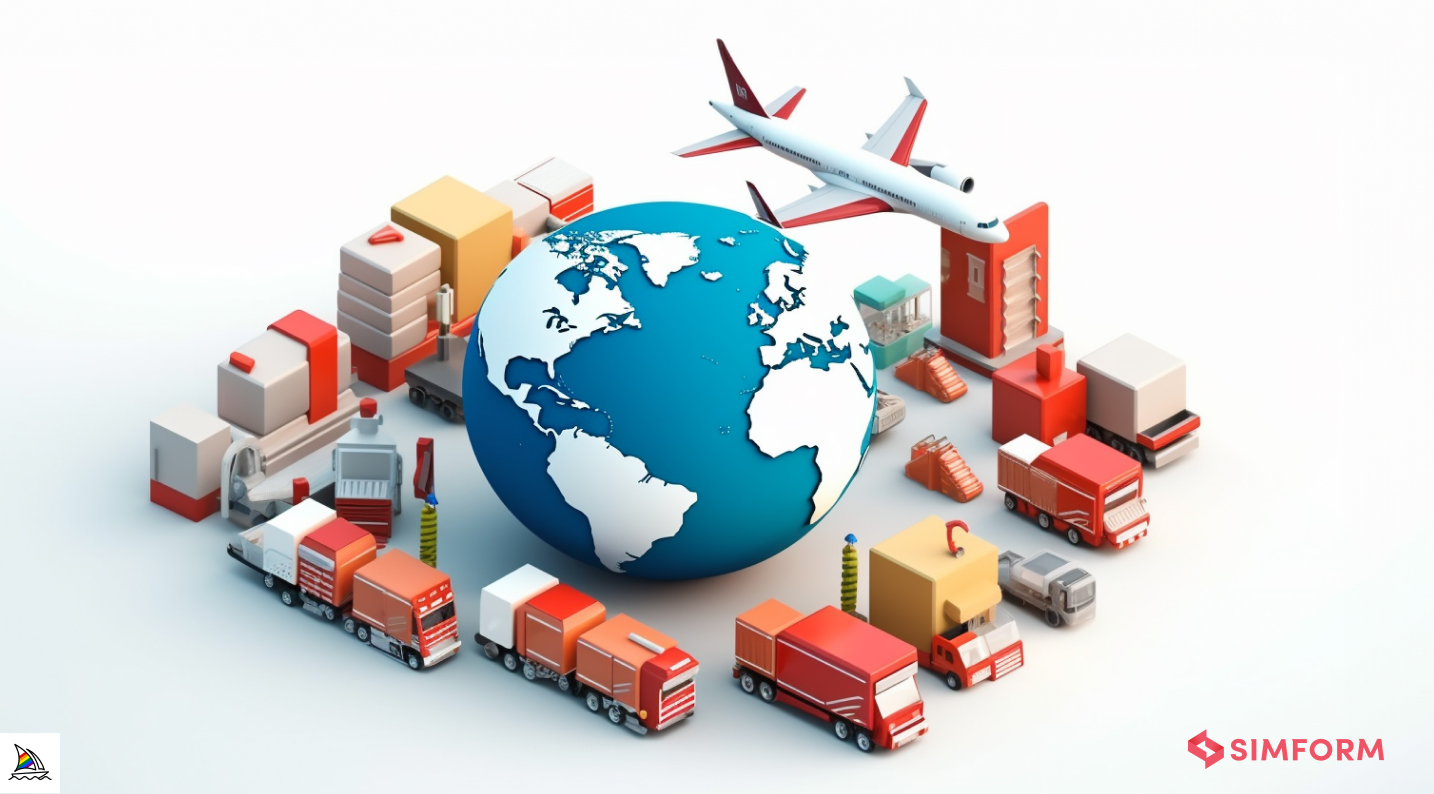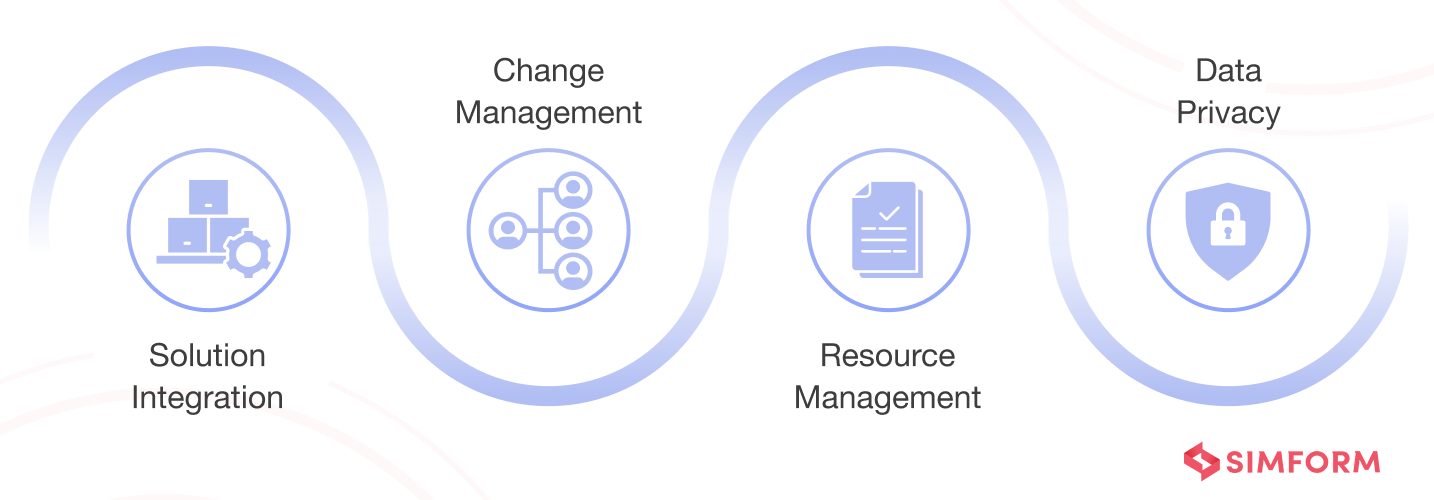The supply chain is the lifeblood of any business. An efficient and resilient supply chain enables companies to get products to market faster, reduce costs, and better meet customer demand. In today’s world of near-instant gratification and fluctuating consumer preferences, supply chain agility is more important than ever.
Cloud computing offers a way for companies to achieve the automation and flexibility required for a modern supply chain. AWS, with its broad array of services and global infrastructure, is uniquely positioned to help businesses transform their supply chain operations.
In this post, we will explore the top 10 use cases for supply chain automation using AWS. We will also discuss the key challenges companies need to address to successfully leverage AWS, including data integration, change management, and cloud migration strategies.
Let’s begin with a clear understanding of what supply chain automation is.
What is supply chain automation?
Supply chain automation refers to the use of software, robotics, and other technologies to automate repetitive, manual tasks across the supply chain. It allows businesses to cut down on execution time and costs.
Supply chain automation mainly focuses on streamlining workflows in areas like manufacturing, warehousing, logistics, and delivery. AWS offers a robust suite of services that enable end-to-end supply chain automation.
To understand exactly how AWS services help businesses streamline their processes, let us explore the top 10 use cases for supply chain automation using AWS.
Use cases for supply chain automation using AWS
The supply chain involves many complex processes for sourcing, producing, stocking, and delivering products. There are ample opportunities to automate these workflows for greater efficiency, visibility, and resilience. AWS provides services to optimize key operations like inventory management, logistics, and warehousing. Let’s see how!
1. Inventory management

Effective inventory management involves monitoring stock levels, anticipating demand, and ensuring timely restocking. AWS services can enhance visibility and automate replenishment:
Demand forecasting
Demand forecasting is a crucial component of effective inventory management. Rather than relying on simple formulas like MOQ or EOQ, supply chain professionals can leverage Amazon Forecast to gain data-driven insights into future demand patterns.
Amazon Forecast allows you to upload historical sales data and run it through machine learning algorithms to identify trends and seasonality. Not only is it easy to add data at any point during analysis, but Amazon Forecast also corrects and preprocesses your data to make it ready for analysis.
A machine learning algorithm is used to analyze data for which you must select an algorithm of your choice or let Amazon Forecast choose the ideal model for you. After the model has been trained on the selected algorithm, you can create forecasts that span over multiple SKUs, which allows you to plan inventory levels for multiple products.
Live inventory tracking
Knowing exactly what’s in stock at all times is critical for meeting customer demand, but tracking inventory in real-time can be a challenge. This is where Amazon DynamoDB helps. DynamoDB is a lightning-fast NoSQL database perfect for dynamic inventory management. It enables supply chain teams to see up-to-the-minute stock counts across all their facilities with near-instant updates.
Moreover, DynamoDB helps set up automatic alerts when stock levels dip below target thresholds so you can promptly reorder. Its seamless backup capabilities also give you peace of mind that your inventory data is safe from corruption or crashes.
Automated inventory replenishment
Keeping products in stock requires strategic restocking based on usage patterns and lead times. AWS makes it easy to establish automated inventory replenishment workflows.
Amazon S3 provides scalable, durable, and highly available object storage in the cloud. It allows companies to store vast amounts of inventory data reliably. Supply chain teams can use S3 to maintain a central, real-time record of inventory quantities across all distribution centers, warehouses, and retail outlets.
When integrated with order management and fulfillment systems, S3 gives an up-to-date view of stock levels as goods are sold and shipped. This enables setting reorder points based on current on-hand inventory rather than static projections.
When you pair this with Amazon SNS, which is a messaging service that can be used to trigger notifications through multiple channels, you will always know when inventory levels fall below the set threshold. These systems are also very resilient to data loss scenarios, as they allow you to save database backups, which you can reload at any given time.
2. Logistics

Manual processes often lead to inflated costs and reduced visibility. AWS provides services to automate logistics workflows for greater efficiency, speed, and transparency. Two key use cases are real-time shipment tracking and delivery route optimization.
Real-time tracking of goods
AWS IoT Core provides the capabilities to enable real-time visibility into the location and condition of goods in transit. It manages connectivity and data routing for internet-enabled sensors and devices attached to shipments. Telemetry from these IoT sensors flows into IoT Core, including data like GPS coordinates, temperature, humidity levels, shock impact, and more.
Cross-domain communication is one of the most reliable methods of sharing messages, as the messages are sent to multiple channels, such as text messages, push notifications, and email.
This creates a continuous stream of logistics data to give supply chain managers live updates as inventory moves through the delivery network. IoT Core seamlessly integrates with other AWS analytics services to enrich and trigger actions based on the tracking data. For example, alerts can be created if a cold chain shipment exceeds temperature thresholds or faces unacceptable impacts.
Dynamic routing
Route planning and optimization have always been critical to making shipments on time and at the lowest cost possible. Planning routes manually is a time-consuming process that can be automated using the Amazon Location Service, which allows you to rapidly add your shipping stops with its geocoding and optimize routes accordingly.
Since the entire process is automated, planning routes when there are emergencies or last-minute changes becomes a breeze as the route can be adjusted and replanned within minutes.
Cross-domain communication
Without cross-domain communication, you risk messages not being received by customers, stakeholders, and staff should a technical error occur on any of the channels that you use for communication. However, doing so using traditional methods such as text messaging and manually written emails is an arduous and expensive process.
This is where Amazon SNS comes in, which facilitates push notifications, SMS, and email notifications at a very affordable price. Automating notifications in this manner is not only better in terms of cost, but it also delivers a better experience to customers.
3. Customer experience

Delivering exceptional customer experiences requires meeting expectations around product quality, shipment visibility, and service. AWS automation helps improve these areas.
Automated quality assurance
Ensuring only defect-free products ship is vital for customer satisfaction. Amazon Lookout for Vision is a machine learning service specifically made to autonomously detect anomalies and defects in products.
Amazon Lookout trains computer vision models by analyzing sample images of defect-free products versus examples of defects. It can detect subtle variations in color, shape, size, or placement of components that may indicate a quality issue.
The models can be deployed to analyze streaming images from cameras installed at manufacturing facilities, warehouses, etc. This allows continuous inspection of items as they move through assembly lines or conveyor systems, flagging defects.
Trend and pattern recognition
Tracking trends from regular operations can be very beneficial in optimizing operations to be more effective and efficient. Amazon Kinesis is an advanced solution for processing real-time data, such as live video streams and clickstreams from sources like IoT sensors, vehicles, equipment, and operational systems across the supply chain.
The processed data can be used to understand customer behaviors and on-site work patterns to raise the overall profitability of your business. For example, Kinesis could detect spikes in warehouse order volume that may indicate an upcoming surge in delivery demand. Or it could identify patterns in delivery times and traffic that optimize driver routing.
Invoice generation
Amazon Textract is an advanced tool from AWS that allows users to scan images or documents and get the format, data, and metrics in machine-readable form.
Once the data and the formats have been collected, you can use an invoice generation tool to generate new invoices that are identical to the original invoices in terms of style. Automating invoice analysis and generation in this manner saves a lot of time spent on data entry.
Rapid customer service
There are many ways to automate customer service operations using AWS. One such option is using AI-powered chatbots from AWS, such as AWS Polly, which can autonomously resolve basic customer queries. This reduces the costs spent on additional support agents and the workload for the existing support staff.
Alternatively, you could use Amazon Connect to manage your customer support interactions across all channels using just a single service. This makes the overall journey of developing an omnichannel support system and catering to customers much easier and faster.
While all of these use cases for supply chain automation with AWS services can make business processes a lot faster for businesses, they can have challenges of their own. Let us look at what these challenges are and how they affect the smooth integration of AWS services.
Challenges associated with AWS implementation in the supply chain
 Regardless of the number of solutions that make the implementation of AWS services easier and faster, there will always be certain issues that are due to the inherent nature of supply chain operations. Let us explore the most common areas where companies face issues when automating supply chain processes using AWS services.
Regardless of the number of solutions that make the implementation of AWS services easier and faster, there will always be certain issues that are due to the inherent nature of supply chain operations. Let us explore the most common areas where companies face issues when automating supply chain processes using AWS services.
1. Integration into legacy systems
Many supply chain organizations rely heavily on legacy on-premises systems that have been built up over many years. These can include ERP, WMS, TMS, and other solutions running on legacy hardware and proprietary software.
When moving to cloud-based supply chain automation with AWS, integrating these existing systems can pose major challenges:
- Legacy platforms often lack the modern APIs needed to interconnect with cloud services. Retrofitting custom interfaces is difficult and time-consuming.
- Legacy databases may not be compatible with newer data schemas and architectures used by AWS solutions like DynamoDB. This can complicate data migration.
- Business logic embedded in legacy systems needs to be mapped and ported to new cloud-native architectures. This is labor-intensive.
- User interfaces and workflows in legacy systems will need a redesign for consistency across old and new tools.
- Legacy vendors may not support or allow integrating their systems with third-party cloud providers.
To overcome these issues, many organizations choose to modernize legacy platforms during cloud adoption. This involves assessing systems for upgrade vs. replacement and strategically moving data and applications to the cloud. While challenging, this level of modernization brings long-term alignment and agility.
2. Change management
Implementing cloud-based supply chain automation requires more than just adopting new technologies. It also involves major organizational change management to ensure user adoption and maximize value.
Some key change management challenges include:
- Getting buy-in at all levels – from execs to frontline workers – on the vision and benefits of cloud automation. Lack of engagement leads to resistance.
- Rethinking and redesigning processes, policies, roles, and responsibilities to align with cloud capabilities. Moving from old ways of working can be disruptive.
- Planning and executing communication and training programs to equip employees with cloud skills. Knowledge gaps lead to sub-optimal use or avoidance of new tools.
- Measuring performance impacts and demonstrating ROI of supply chain automation initiatives.
- Aligning incentives, KPIs, and cultural dynamics to encourage usage of automated workflows rather than reliance on the status quo.
3. Data privacy and security
Supply chains generate and rely on massive amounts of sensitive data – from customer info to logistics records to financial transactions. As this data moves to the cloud, security and privacy become significant concerns.
Key data protection challenges include:
- Classifying data by sensitivity level and mapping appropriate controls in the cloud. Different data types have different protection needs.
- Applying least privilege access controls and role-based permissions in cloud environments. This ensures users only access necessary data.
- Encrypting data in transit and at rest using cloud-native key management. This guards against unauthorized access or leaks.
- Configuring robust cloud network security, including firewalls, intrusion detection/prevention, and DDoS mitigation.
- Tracking data lineage across cloud systems and establishing consistent governance policies.
- Conducting continuous cloud security monitoring, auditing, and risk analysis. Vulnerabilities must be addressed proactively.
4. Resource management
The on-demand resources and infinite scalability of the cloud can provide great agility for supply chains. However, the shift from on-premises hardware to cloud infrastructure also poses new resource management challenges:
- Understanding true resource requirements and costs across supply chain systems based on utilization patterns, not just peak capacity. Overprovisioning wastes money.
- Architecting flexible compute, storage, and network resources that can scale up or down dynamically based on workload changes. This requires cloud-native design.
- Right-sizing resources and choosing appropriate instance types, databases, etc., to balance performance, cost, and compliance. There are many options to evaluate.
- Implementing auto-scaling and load-balancing techniques to automatically adjust resources based on demand fluctuations.
- Monitoring resource usage continuously and fine-tuning based on insights about bottlenecks, waste, etc. Optimization is an ongoing process.
- Developing plans for backup, failover, and disaster recovery across critical supply chain systems and data per business needs.
Considering these challenges, companies must optimize their cloud computing resource consumption to be more frugal and plan resource allocation ahead of time. Check out the top tips for AWS cloud cost optimization to know more about saving funds when using AWS resources.
Get started with supply chain automation with Simform
Turning your supply chain vision into reality requires specialized expertise in both cutting-edge AWS technologies and industry best practices. That’s where Simform comes in.
As an Advanced AWS Consulting Partner, Simform combines deep supply chain experience with proven AWS cloud competencies. Our team of 200+ AWS-certified experts has delivered successful supply chain automation solutions for enterprises across manufacturing, retail, logistics, and other sectors.
We follow a holistic approach encompassing cloud migration and modernization, solution implementation, organizational change management, and ongoing optimization. Our automation frameworks and accelerators allow supply chains to innovate faster while minimizing disruption.
Whether modernizing your legacy systems or pursuing a cloud-native overhaul, Simform provides full-lifecycle guidance. This includes strategy, design, implementation, training, and ongoing management of your AWS supply chain environment. Reach out for an initial consultation today!